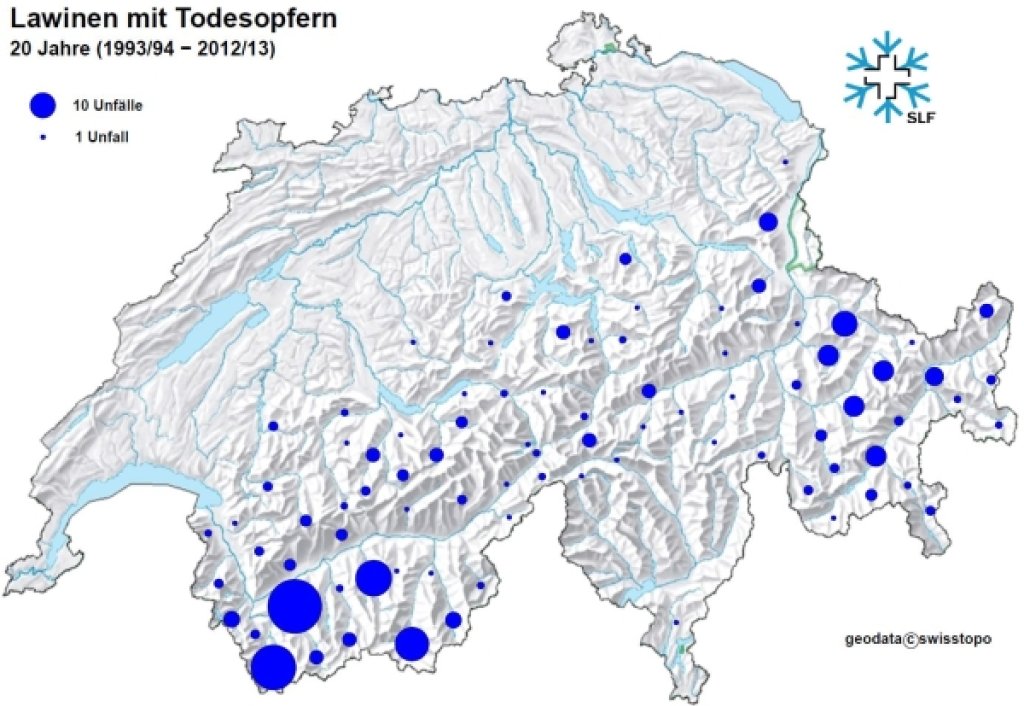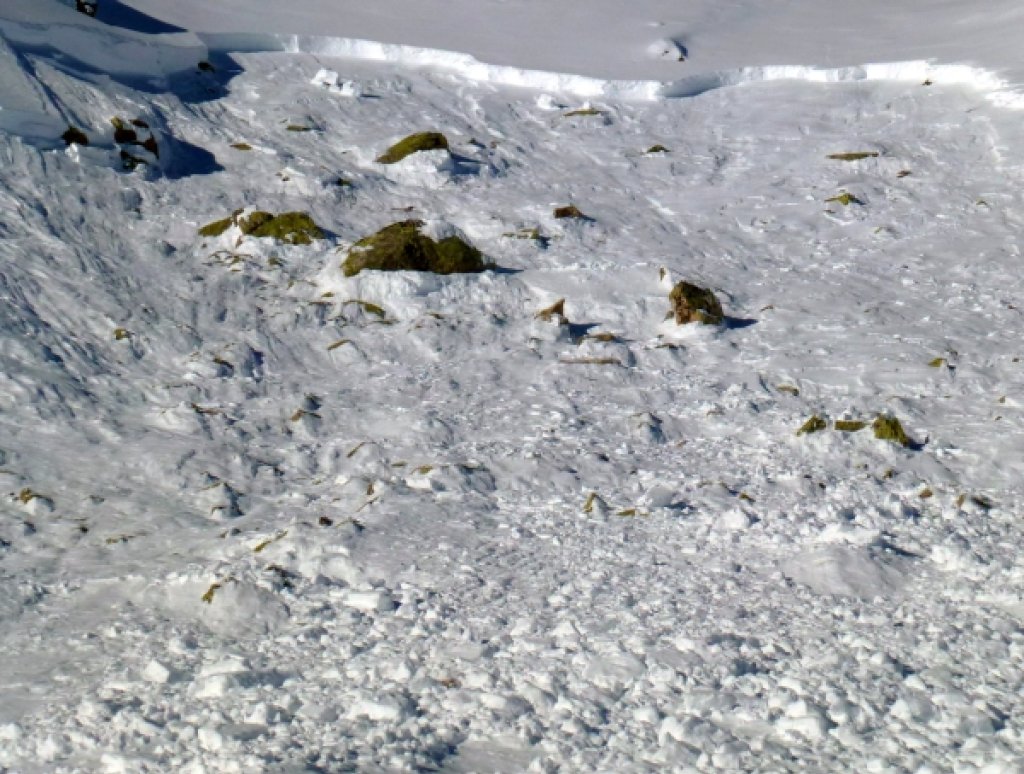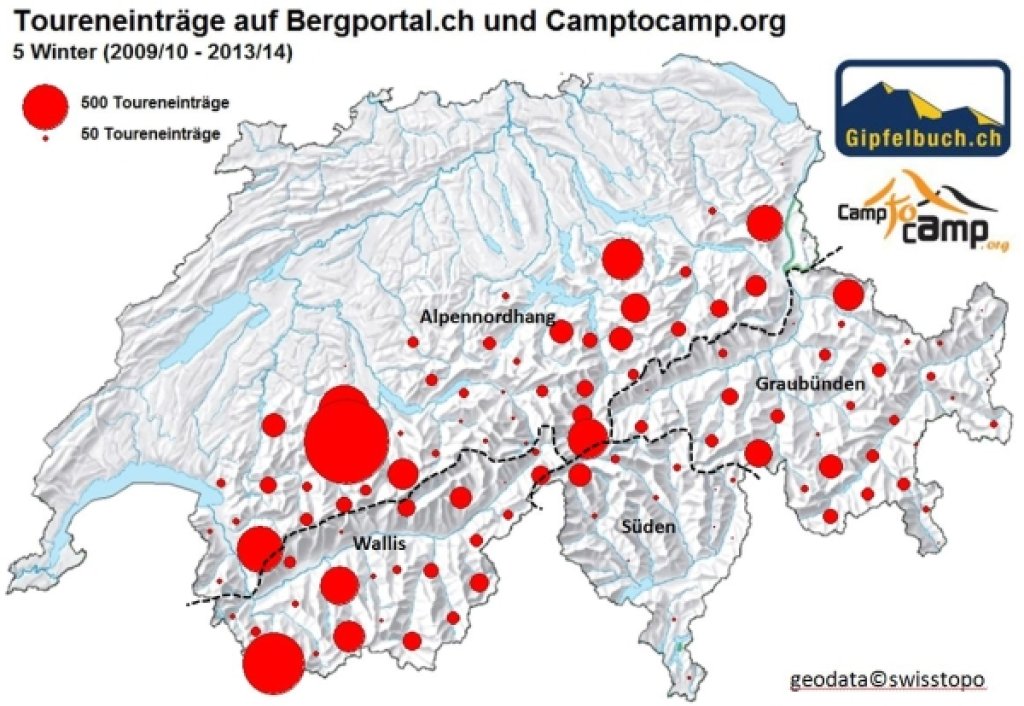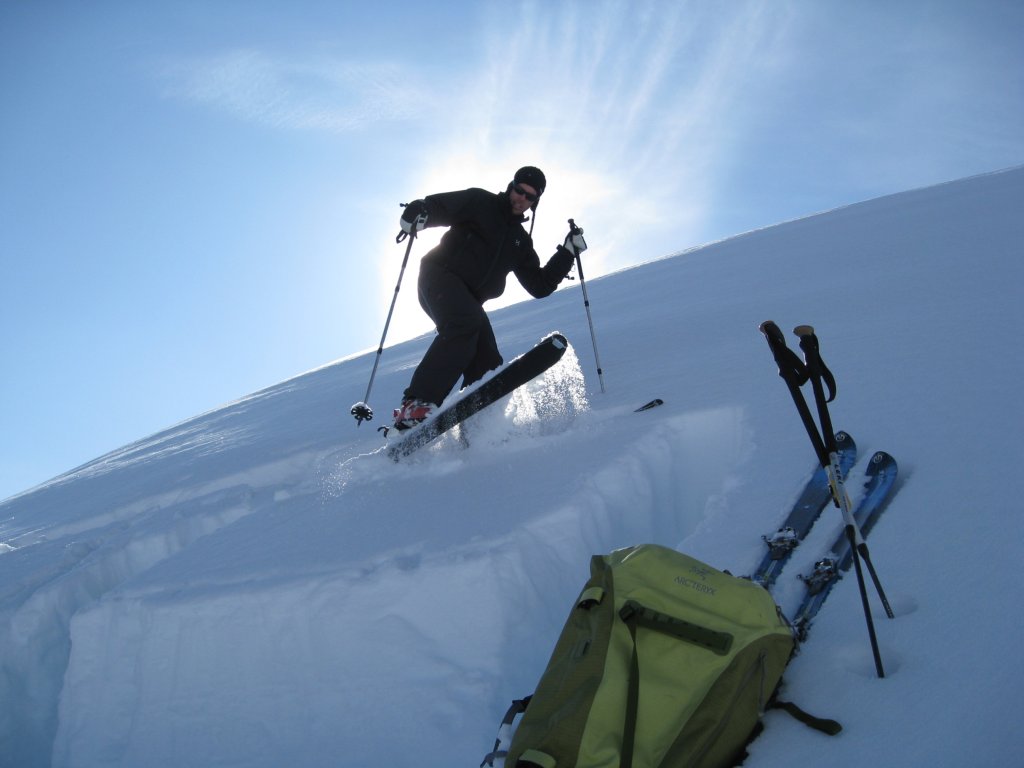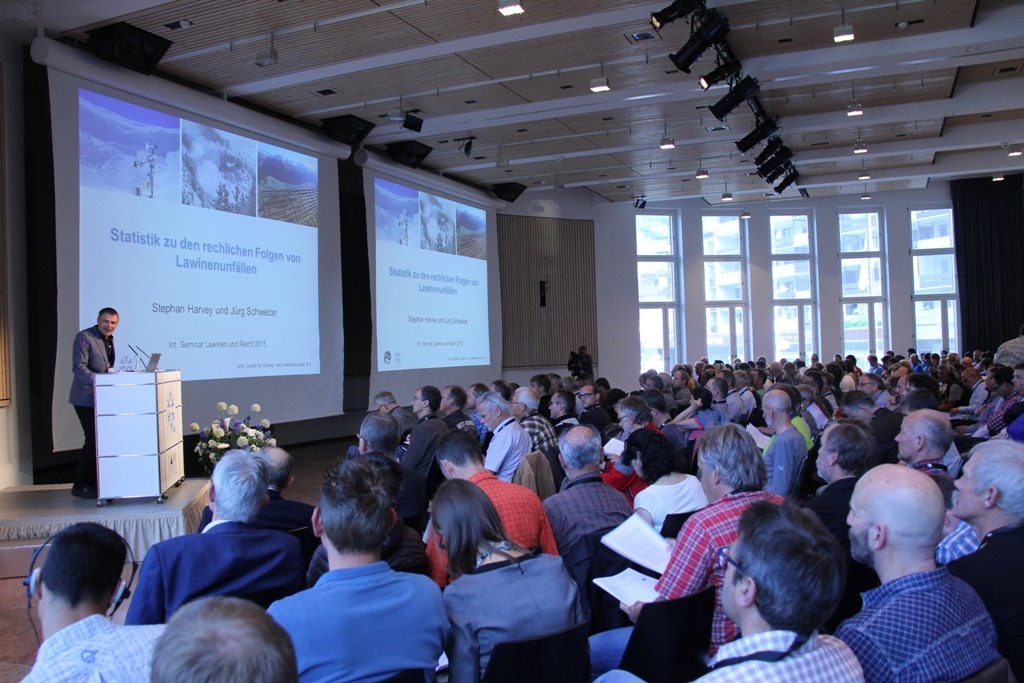A zoomable map for 20 years can be found here.
In order to answer these questions, it is necessary to know how many ski tourers were out and about in the Swiss Alps, when and where. As this data is not available, we tried to reconstruct the spatial distribution based on the tour entries on the two widely used mountain portals www.bergportal.ch and www.camptocamp.org. To do this, we analyzed on which day and in which area a tour entry was created. In total, there were more than 15'000 georeferenced tour entries for the five winters 2009/10 to 2013/14 (Fig. 2). This sounds like a lot, but it is certainly only a very small proportion of all tour days undertaken. The comparison of the regional distribution of tour entries with results from a survey for the avalanche bulletin in spring 2014 showed that the spatial distribution is quite plausible, but the conclusions drawn from this must still be interpreted with caution.
What did we find out?
Although large differences can be seen at a small scale, we can conclude from the tour entries that tour activity (per unit area) is higher on the northern slopes of the Alps and in Valais than in Graubünden and the south. During the same period, the number of serious avalanche accidents on ski and snowshoe tours (in relation to the area of these areas, or to the number of registered tours) was twice as high in Valais and Graubünden as on the northern slopes of the Alps (we count accidents in which at least one person was completely buried, injured or died as serious avalanche accidents).
We therefore looked for other explanations for this accumulation.
